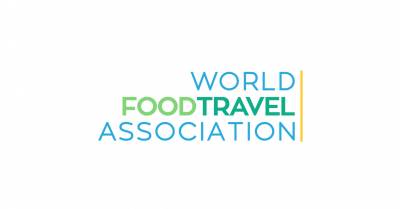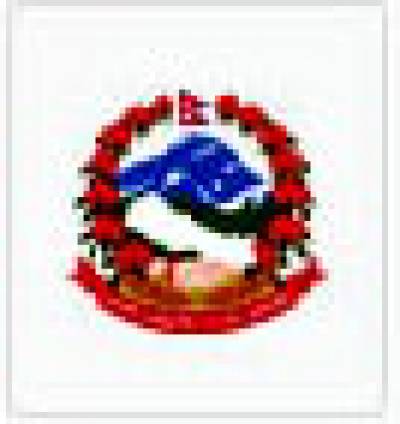ISLAND PEAK SUMMIT RETURN BY HELICOPTER
Many of us only dream of standing on a tall peak looking down on the world. This is a great climb that will satisfy this desire. Island Peak, also referred to as Imja Tse, is a 6187-meter high peak in the Sagarmatha National Park of the Himalayas in the eastern region of Nepal close to the Tibetan border. It was officially named Island Peak in 1953 by members of the British Mount Everest expedition because it looked like an island in a sea of ice when viewed from the village of Dingboche. In order to climb Island Peak you will need to be physically fit and preferably have some previous climbing experience, or alternatively do some training that will prepare you for climbing at high altitudes.
This peak is considered a technical climb and is challenging but with the use of fixed ropes it is a relatively safe climb to the summit. The high altitude is the biggest threat to climbers. From the summit you will have astonishing views of Mt. Ama Dablam, Lhotse and Mera Peak. This is a true climbing expedition that may be the first for many of you, but may inspire you to seek other mountains to climb in the future. This is an opportunity to go beyond trekking and take it to the next level and feel like you are “king of the mountain” as you traipse through the snow to the summit of Island Peak
Sherpa Expedition and Trekking pride themselves on taking excellent care of their clients, providing all permits, meals and accommodation on the trek. There will also be time set aside for preparation prior to the day you climb to the summit.
ITINERARY
Day 1 : Arrival Kathmandu (1,300m/4,428ft) & transfer to hotel.
A representative from Sherpa Expedition and Trekking will be there to meet you at the airport and take you to your hotel in Thamel. Kathmandu is a city full of lively markets, hectic streets, colorful temples and impressive pagodas. The remainder of the day you will can wander around Thamel and catch up on some last minute shopping for equipment. This evening, your guide will brief you and provide valuable information about the trek.
Day 2 : Fly to Lukla (2,800m/9,184ft) & trek to Phakding (2,652m/8,700ft) Duration: 5-6 hours.
Today we take a short scenic flight from Kathmandu to Lukla and then trek to Phakding (2610m), a small village located in the Khumbu region of Nepal in the Dudh Kosi River valley.
Day 3 : Trek from Phakding to Namche Bazaar (3,440m/11,283ft) Duration: 5-6 hours.
Today we cross several suspension bridges over the Dudh Kosi River before trekking through the villages of Tok-Tok, Benkar, and Monjo before arriving at the Sagarmatha National Park entrance gate where you will be asked to show your trekking permit. After following the river bed for a few hours and then crossing the last Hillary suspension bridge, there is a steep uphill climb to Namche Bazaar. Namche Bazaar has a good selection of restaurants, an internet café, pubs, post office, ATM and banks.
Day 4 : Exploration & Acclimatization at Namche Bazaar.
Acclimatization is a necessary exercise before climbing to higher altitudes. Health professionals strongly suggest that you stay active during the day, so today we will trek to the villages of Khunde and Khumjung and have a spectacular view of Mt. Everest before heading back to Namche Bazaar. At Namche Bazaar you may wish to view what is said to be a Yeti skull! Namche Bazaar is proud to say it has a bakery! Strolling around Namche Bazaar is another way to remain active. Sitting still for too long is not a good idea.
Day 5 : Trek from Namche Bazaar to Tengboche (3,870m/12,694ft) Duration: 5-6 hours.
This morning we follow the trail along the banks of the fast flowing glacial waters of the Dudh Kosi River. On the trail you will have some superb views of Mt. Everest, Lhotse, Taboche and Amadablam. We will attain an altitude of 3,800 meters at Tengboche. The Tengboche monastery has beautiful ornate wall hangings, a 20-foot sculpture of various poses of the Buddha, musical instruments and robes worn by the Lamas. You will observe a prayer ceremony, either in the evening or in the morning, depending on how the trekking goes today. The chanting is comforting to the soul.
Day 6 : Trek from Tengboche to Dingboche (4,360 m/14,300 ft) Duration: 4-5 hours.
Today we head downhill on a three to four hour trek on a trail that passes through forests before crossing the Imja Khola (river) and on through the village of Pangboche, with its distinct fields surrounded by rock walls. Tonight we stay at Dingboche.
Day 7 : Trek from Dingboche to Chhukung (4,730m/15,518ft) Duration: 3-4 hours.
Dingboche is surrounded by the peaks of Ama Dablam, the edge of Nuptse-Lhotse, Tawache and Cholatse. Today we trek to Chhukung passing through stone-walled fields and the Imja Khola Valley before having to cross the icy moraines. Just beyond the village of Bibre we can see Island Peak. The trail crosses several streams before coming to Chhukung. From Chhukung we can see Ama Dablam and the Amphu Labtsa mountains.
Day 8 : Hike up to Chhukung Ri (5,546m) and trek back to Chhukung (4,700m) Duration: 3-4 hours.
From Chhukung you will appreciate the superb view of Mt. Ama Dablam. The views of Island Peak from Chhukung (and further up the valley) are quite stunning. We will scramble up to Chhukung Ri from where you will have views of Ama Dablam and Amphu Labtsa.
Day 9 : Trek from Chhukung to Island Peak Base camp (5,200m/17,060ft) Duration: 3-4 hours.
Today we follow a steep trail up to Island Peak Base Camp. We pass below the southern flank of the moraine from the Lhotse Glacier and then follow the trail next to a stream until reaching Island Peak Base Camp where we stay overnight.
Day 10 : Climb from Island Peak Base Camp to Island Peak Summit (6,189m/20,305ft)& back to Chhukung and fly back to Lukla By Helicopter; Duration: 10-12 hours.
Today is the day you have been preparing for and as long as the weather is suitable we will head off very early in the morning to climb to the summit of Island Peak (6,187m). We initially climb up through a gully and veer to our right. We then cross a very rocky area and a ridge from where we have some fantastic views of glaciers and crevices. After some time at the summit taking in the views and madly taking photos, we will head back down to Chhukung and we will take a sharing helicopter to Lukla for an overnight stay.
Day 11 : Fly to Kathmandu from Lukla.
Early this morning we fly over the mountains back to Kathmandu. Most flights depart in the morning so as to avoid the gustier and unpredictable weather that sometimes develops later in the day. During the flight you can look down on the magnificent Himalayan Mountains that we are now familiar with. After arriving at Kathmandu you can rest or do some last minute shopping around Thamel. Alternatively you can catch up on seeing places you missed in Kathmandu. Your guide will be available to help and direct you with souvenir shopping or sightseeing.
Day 12 : Transfer to the International airport for your final departure.
A representative from Sherpa Expedition and Trekking will take you to the airport around 3 hours before your scheduled flight. On your way home you may already be planning on another climbing expedition to Nepal. There are enough mountains to satisfy any climber.
SERVICES
Costs included in your package.
- Airport picks up and transports by private Car/Jeep.
- Two night’s standard twin sharing Hotel in Kathmandu with breakfast.
- Three meals a day (Breakfast, lunch, and dinner) during the trek.
- Fresh fruit every evening after dinner.
- Shared Helicopter From Chhukung To Lukla
- Trekking Lodge (Tea House) during the trek and tent camp accommodation during climbing session.
- All necessary paperwork including Sagarmatha National Park Entry Permit & Khumbu Pasang Lhamu Rural Municipality fees.
- Kathmandu-Lukla-Kathmandu (Ramechhap -Lukla- Ramechhap) flight with private airport transfer and domestic airport tax.
- A highly experienced, helpful, knowledgeable, friendly, English speaking well trained, Government license holder guide with all his salary, food, drinks, accommodation, transport and insurance.
- Climbing permit of Island Peak.
- Strong, helpful Sherpa porters with proper safety equipment and walking equipment, his salary, food, accommodation, and insurance (one porter for two people).
- Comprehensive medical supplies (first aid kit will be available).
- Arrangement of emergency helicopter service (paid by your Travel Insurance Company).
- Use of sleeping bag, down jacket, duffel bag and walking poles (if you don’t have your own, to be returned after trip completed).
- Sherpa Expedition and Trekking T-shirt
- Government taxes and official expenses.
- Trip achievement certificate after successful trip completion.
- Oxygen meter to check your pulse and oxygen saturation and heart rate twice daily (Very useful to check Altitude Mountain Sickness(AMS) symptoms) which will ensure your health during the trek.
- Assistant guide for groups of 8 or more people.
Costs Exclude
- Meals whilst you are in Kathmandu - lunch, and dinner.
- Nepal entry visa fee (easy to obtain the visa on arrival at Tribhuvan International Airport – Kathmandu). $30 USD for 15-day, $50 USD for 30 Days, and $125 USD for 90 Days visa.
- Personal travel and medical insurance.
- International airfare.
- Your personal expenses.
- All the alcoholic and nonalcoholic, soup, tea, coffee, hot chocolate, cocoa, mineral water, extra food, cold and hot drinks on trek ( i.e. those you choose to purchase along the way and during evenings in the tea houses)
- All desserts & sweet things like chocolate, cake, pie, pudding.
- Hot shower and battery charging at the tea houses.
- Tips for the guide, porter, and driver (tipping is expected)
- Excess baggage of more than 10 kg for Lukla flight.
- NOTE: If you return earlier from the trek due to sickness or any problem, the money you paid for the flight, hotel, mountain room, food, etc. is nonrefundable, and you will need to bear the expenses for the hotel, food, etc. in Kathmandu yourself.
EQUIPMENTS
You will be carrying all of your gear and share some of the cluster gear. Keeping your pack light is important, so choose light-weight clothing and equipment. Be sure to have a range of clothing suitable for all conditions. Sudden change of weather may require layering of clothing. Three layers will meet your needs. Avoid cotton or fabrics that do not maintain heat when cold. Comfortable durable wool (or proven fabrics) that breathe and expel sweat lends itself to an additional pleasant experience!'
We will offer complimentary water and a windproof duffle that you'll use on the trek - carried by porters. The duffle is yours to keep once at the end of the trek. You can safely leave your bag, together with your non-trekking requirements, at our office in Katmandu and collect them upon your return.
All equipment, such as base camp tents, room accessories, climbing rope, ice screws, snow bar and ice hammer is provided by Sherpa Expedition & Trekking.
Upper Body:
- Base Layers: Moisture-wicking and quick-drying shirts and thermal tops.
- Insulation Layers: Fleece or down jackets to provide warmth.
- Waterproof Shell Jacket: A durable and breathable jacket to protect against wind and rain.
- Softshell Jacket: A lightweight and water-resistant jacket for added protection.
- Climbing Harness: A comfortable harness to secure yourself to the rope.
- Helmet: A strong and well-fitting helmet to protect your head from falling objects.
- Gloves: A combination of lightweight liner gloves and insulated gloves or mittens for warmth and dexterity.
- Buff or Neck Gaiter: To protect your neck and face from cold and wind.
- Sunglasses: Polarized and UV-protected sunglasses to shield your eyes from the sun and snow glare.
- Goggles: Ski or mountaineering goggles for added eye protection in extreme weather conditions.
Lower Body:
- Base Layers: Moisture-wicking and quick-drying thermal bottoms.
- Insulation Layers: Fleece or insulated pants for added warmth.
- Waterproof Shell Pants: Durable and breathable pants to protect against wind, rain, and snow.
- Softshell Pants: Lightweight and water-resistant pants for added protection.
- Mountaineering Boots: Sturdy and insulated boots designed for snow and ice.
- Crampons: Attachable spikes that provide traction on icy terrain.
- Gaiters: Waterproof and breathable gaiters to keep snow out of your boots.
- Socks: A combination of moisture-wicking liner socks and thick, warm mountaineering socks.
Other Essential Items:
- Backpack: A spacious and sturdy backpack to carry your climbing gear and personal belongings.
- Sleeping Bag: A warm and lightweight sleeping bag that can withstand sub-zero temperatures.
- Trekking Poles: Adjustable trekking poles for added stability and support.
- Headlamp: Essential for climbing in low-light or dark conditions.
- Water Bottles: Insulated water bottles to keep your water from freezing.
- Sunscreen: High SPF sunscreen to protect your skin from the strong sun at high altitudes.
- First Aid Kit: A comprehensive first aid kit with essential medications and supplies.
- Climbing Snacks: Energy bars, nuts, and other lightweight snacks for quick fuel during the climb.
It is important to invest in high-quality gear and ensure that everything fits properly and is in good condition. Additionally, consult with experienced climbers or a professional guide to ensure you have all the necessary gear and receive proper training on how to use it effectively and safely.
GOOD TO KNOW
If you are considering climbing Island Peak, here are some important things to know:
1. Island Peak, also known as Imja Tse, is located in the Everest region of Nepal. It stands at an elevation of 6,189 meters (20,305 feet) and is a popular climbing destination for mountaineers.
2. Prior climbing experience is recommended as Island Peak is a technical climb. Basic mountaineering skills such as using crampons, ice axe, and rope techniques are necessary.
3. Acclimatization is crucial due to the high altitude. It is advisable to spend a few days in the Everest region, acclimatizing and trekking to higher altitudes before attempting the climb.
4. A climbing permit is required to climb Island Peak. This can be obtained through a registered trekking agency in Nepal. Make sure to check the latest permit regulations and fees.
5. Hiring a local guide or joining a guided expedition is highly recommended. They have the expertise, knowledge of the route, and can provide support and safety during the climb.
6. The best time to climb Island Peak is during the pre-monsoon (spring) season (April to May) and post-monsoon (autumn) season (September to November). These months generally have more stable weather conditions and clear views.
7. Proper gear and equipment are essential for a safe and successful climb. This includes mountaineering boots, crampons, ice axe, climbing harness, helmet, layers of warm clothing, gloves, and other necessary climbing gear.
8. Physical fitness and endurance are important for climbing Island Peak. Regular exercise, cardiovascular training, and strength-building activities are recommended to prepare your body for the physical demands of the climb.
9. It is important to be aware of altitude sickness and its symptoms. Take necessary precautions, such as proper acclimatization, staying hydrated, and following the guidance of your guide.
10. Respect the local culture and environment. Island Peak is located in Sagarmatha National Park, a UNESCO World Heritage Site. Follow the Leave No Trace principles, adhere to local customs, and be mindful of the fragile mountain ecosystem.
Always prioritize safety and consult with experienced climbers or professional guides for further information and guidance specific to your Island Peak climbing expedition.
MAP
PHOTOS/Videos
Departures
Select a departure month
Fill out the form below and a Travel Expert will reach out to create your perfect tour.
FAQS
How difficult is it to climb Island Peak?
Island Peak is considered a moderately difficult climb. It requires basic mountaineering skills, including using crampons, ice axe, and rope techniques. Prior climbing experience and physical fitness are recommended.
Do I need a climbing permit for Island Peak?
Yes, a climbing permit is required to climb Island Peak. It can be obtained through a registered trekking agency in Nepal. The permit fees vary depending on the season and nationality.
Can I climb Island Peak without a guide?
While it is possible to climb Island Peak without a guide, it is highly recommended to hire a local guide or join a guided expedition. They have the knowledge, experience, and can ensure your safety during the climb.
What is the best time to climb Island Peak?
The best time to climb Island Peak is during the pre-monsoon (spring) season (April to May) and post-monsoon (autumn) season (September to November). These months generally have more stable weather conditions and clear views.
How long does it take to climb Island Peak?
The duration of the climb can vary depending on several factors, including your fitness level and acclimatization. Typically, it takes around 3 weeks for a complete Island Peak climbing expedition, including trekking to and from the base camp.
What permits do I need for climbing Island Peak?
In addition to the climbing permit, you also need a Sagarmatha National Park entry permit and a TIMS (Trekkers' Information Management System) card. These permits can be obtained through the trekking agency.
Is altitude sickness a concern on Island Peak?
Yes, altitude sickness is a concern when climbing Island Peak due to the high elevation. Proper acclimatization, staying hydrated, and following the guidance of your guide are essential to minimize the risk.
What gear do I need for climbing Island Peak?
You will need mountaineering boots, crampons, ice axe, climbing harness, helmet, layers of warm clothing, gloves, and other necessary climbing gear. It is important to have proper gear and equipment for a safe and successful climb.
Is previous climbing experience required for Island Peak?
While previous climbing experience is not mandatory, it is highly recommended to have some basic mountaineering skills and experience with high-altitude trekking to ensure a safer and more enjoyable climb.
Can I rent climbing gear in Nepal?
Yes, you can rent climbing gear in Nepal. Kathmandu and Lukla are common places to find gear rental shops. However, it is advisable to bring your own personal gear and rent only the equipment you don't have or can't bring with you.
Latest Traveller’s Reviews
Travel experiences of our clients who recently returned from their trips.
100%
Based On 7 Reviews
Alice Jenny
Australia
January 3, 2024
Convenience without compromising on the adventure
Island Peak Summit Return by Helicopter offers convenience without compromising on the adventure. It's a great option for those who may have time constraints or physical limitations but still want to experience the thrill of summiting a Himalayan peak.
Grażyna Kubisz
Denmark
December 6, 2023
Experienced pilots and top-notch safety measures
The Island Peak Summit Return by Helicopter ensures top-notch safety measures with experienced pilots who prioritize the well-being of the passengers. It's comforting to know that you are in capable hands, allowing you to fully enjoy the ride and take in the stunning views.
Loana Petrescu
United States
December 5, 2023
A sense of accomplishment with added comfort
The Island Peak Summit Return by Helicopter option provides a sense of accomplishment for reaching the summit while also adding an element of comfort. After the challenging climb, being able to relax and enjoy the scenic helicopter ride back is a well-deserved treat.
People Considering This Package Right Now Check availability
























